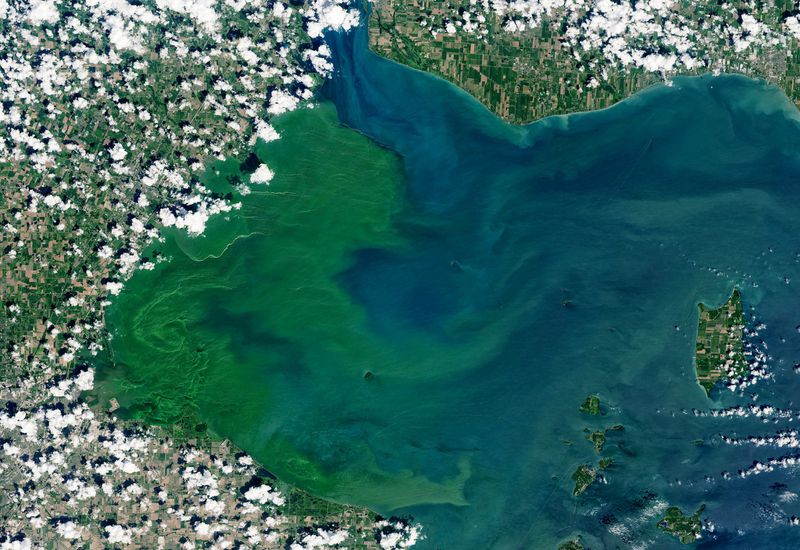On November 19, 2019, the U.S. Environmental Protection Agency (“EPA”) awarded five grants totaling nearly $3.6 million to organizations dedicated to clean-up and restoration activities across Lake Erie.[1] The grants were awarded to the Ohio EPA, Ohio Lake Erie Commission (“OLEC”), Ohio Department of Natural Resources, and the Northeast Ohio Four County Regional Planning and Development Organization, and are part of a broader mission by the EPA to restore and protect the Great Lakes region.[2]
The grants follow a July 2019 algae bloom outbreak that was among the most severe and toxic since scientists began tracking algae blooms in the early 2000’s.[3] The bloom covered nearly 620 square miles over the surface of Lake Erie, an area more than twice the size of Chicago.[4] Greater rainfall in recent years has increased erosion and flooding along Lake Erie’s coast line, which allows farm fertilizers and waste water to infiltrate the lake while higher temperatures cause the blooms to expand further and last longer.[5]
Certain programs that received funding through the EPA’s grants will tackle the threat of algae blooms head on. These programs include a plan by the Ohio EPA and OLEC to reduce phosphorus runoff and to protect and restore streams and wetlands by working with farmers as well as a grant to develop and implement the Lakewide Action Management Plans for Lake Erie and Remedial Action Plans for Lake Erie areas of concern.[6]
*Featured Image: The 2019 toxic algae bloom that formed in western Lake Erie. In a NASA satellite image taken on July 30, 2019, the green medley of plankton and bacteria had grown larger than New York City. (USGS/NASA Landsat).
[1] Press Release: EPA announces grants to advance clean-ups in Ohio’s Lake Erie Watershed and Areas of Concern, USEPA (Nov. 19, 2019) https://www.epa.gov/newsreleases/epa-announces-grants-advance-clean-ups-ohios-lake-erie-watershed-and-areas-concern (last visited Nov. 22, 2019).
[2] Id.
[3] Tony Briscoe, The shallowest Great Lake provides drinking water for more people than any other. Algae blooms are making it toxic — and it’s getting worse, Chicago Tribune (Nov. 14, 2019) https://www.chicagotribune.com/news/environment/great-lakes/ct-lake-erie-climate-change-algae-blooms-20191114-bjkteorf5vg2hfu3cgqxe2ncru-story.html (last visited Nov. 22, 2019).
[4] Id.
[5] Algae Bloom in Lake Erie Poses Major Health Threat, NOAA (Aug. 15, 2019) https://www.nesdis.noaa.gov/content/algae-bloom-lake-erie-poses-major-health-threat (last visited Nov. 22, 2019).
[6] Laura Johnston, U.S. EPA announces $3.6 million in Lake Erie grants, Cleveland.com (Nov. 19, 2019) https://www.cleveland.com/news/2019/11/us-epa-announces-3-million-in-lake-erie-grants.html (last visited Nov. 22, 2019).


